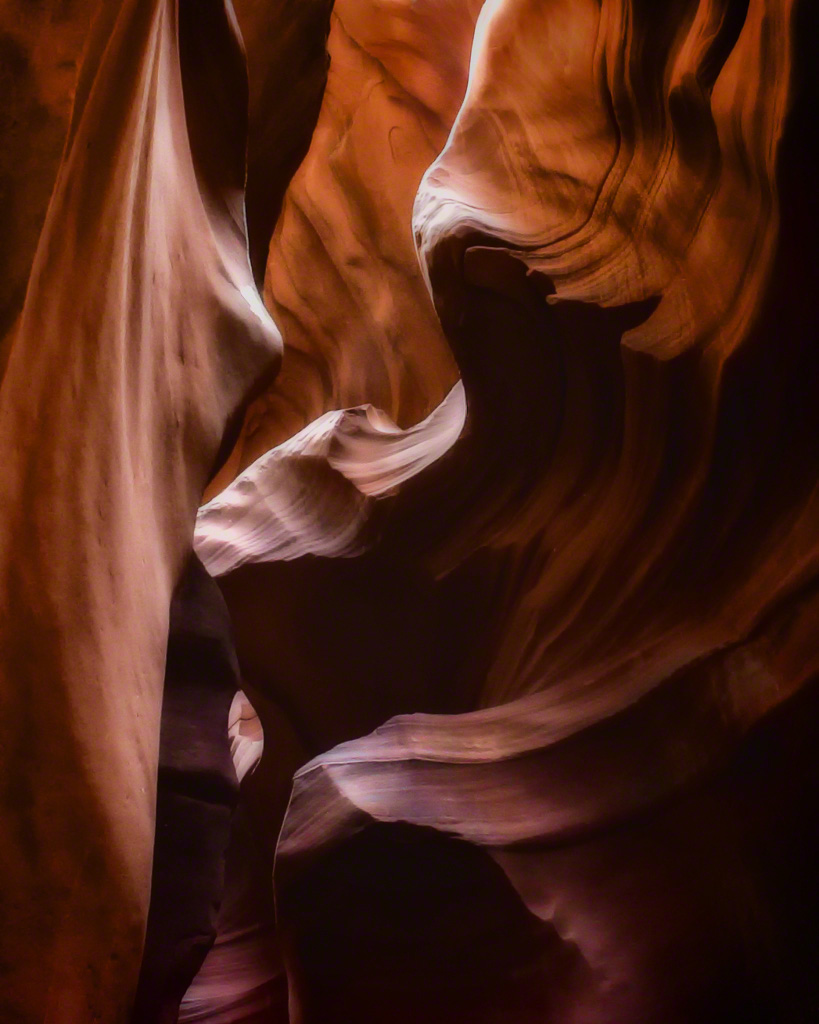(To see the most detail in this image, click on it to enlarge it!)
This photograph was taken in the Lower Slot Canyon in Antelope Canyon near Page, Arizona. It’s amazing to think how the force of centuries of water running in a creek through these rocks as well as flash floods from the Southwest’s monsoon rains have carved such beautiful structures. Most slot canyons are formed in sandstone or limestone. The slot canyons can measure as little as 3 feet across at the top and 100 feet down, not always widening very much at the bottom. Antelope Canyon is the most-visited and most-photographed of the slot canyons in the American Southwest. It’s located on Navajo land near Page, Arizona and is formed of Navajo Sandstone.
From a photography perspective, the slot canyons are very interesting because, for most of your shots, you are shooting in the dark. The camera is on a tripod and the exposures are very long ranging from 1/15th of a second to 30 seconds. With exposures that long, the minimal existing light has enough time to create a viewable image from the camera’s sensor. It takes experimentation in the dark until you get the right exposure. It’s a little easier in those areas of the canyons where some sunlight is streaming down from above, but then the exposures get very tricky because great contrast exists between the very bright and very dark areas of what you’re shooting (a good reason to use multiple exposure HDR – although I didn’t use it on this photo). This, plus the hikes down into the canyons, make it lots of fun to shoot there and then work on your images afterwards.

5 Comments on “Rocks That Flow”
I can see characters in the sides. I love it!
Nature’s sculpture! Fluid but solid at the same time. I like the sliver of light that starts at the top and flows over the rocks and bounces off those angles.
I like that light too. Thanks…
to get a windblown look, in t he dark yet, is amazing
Thank you Bee.